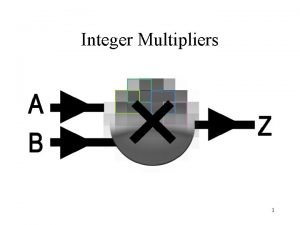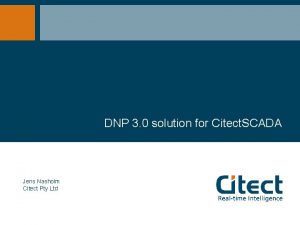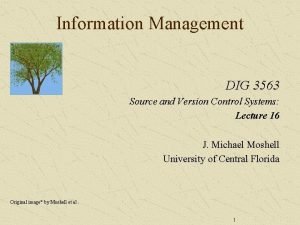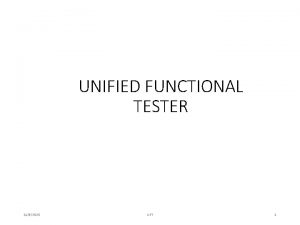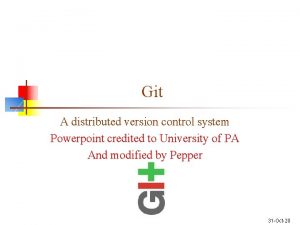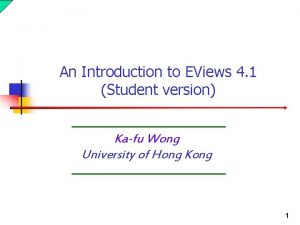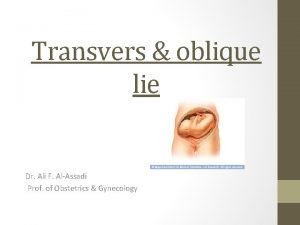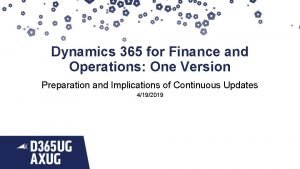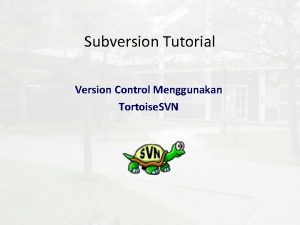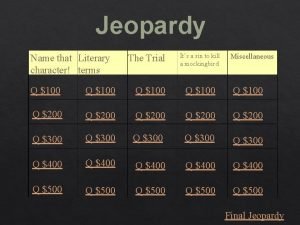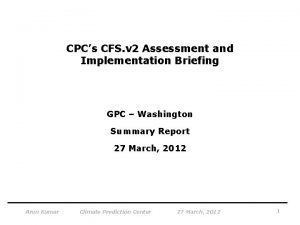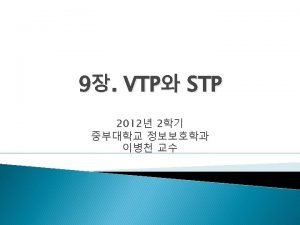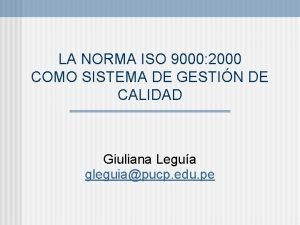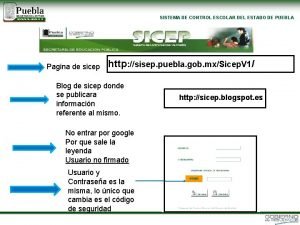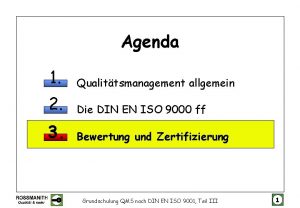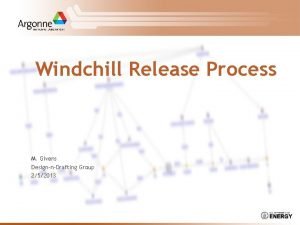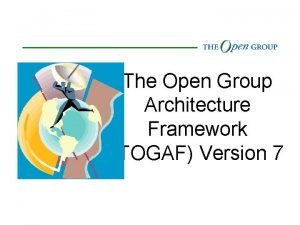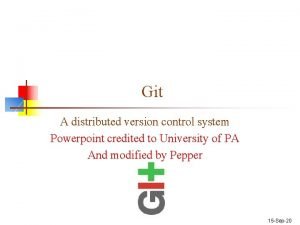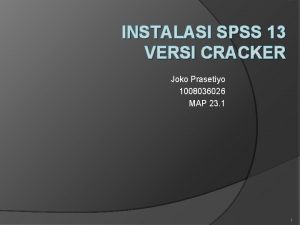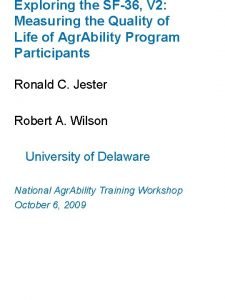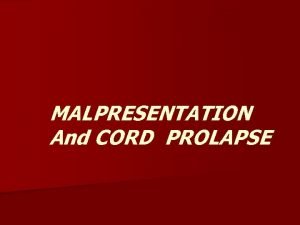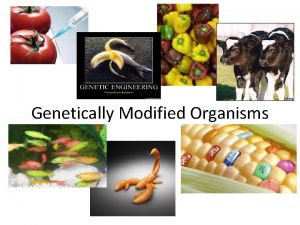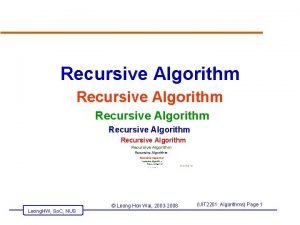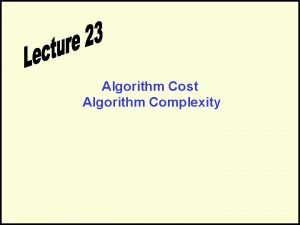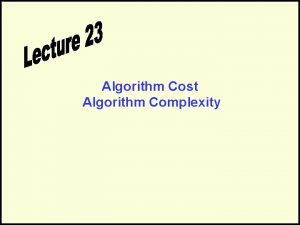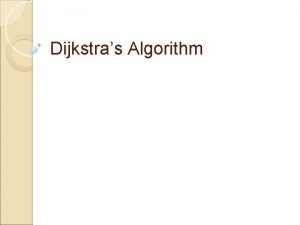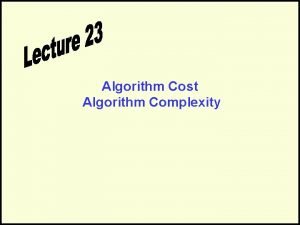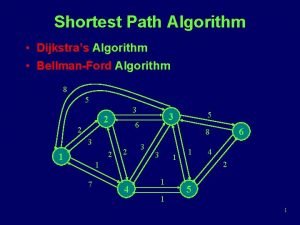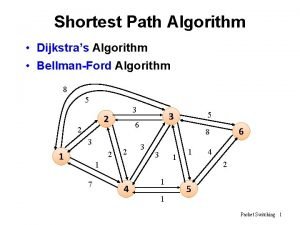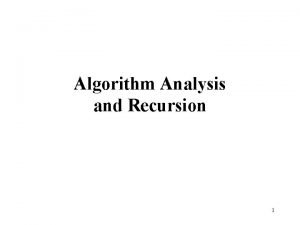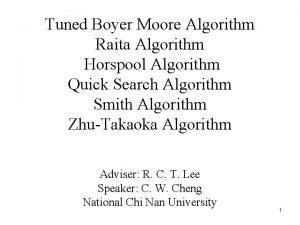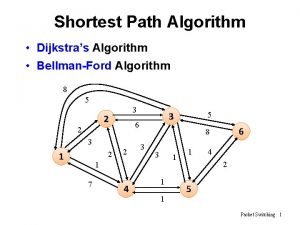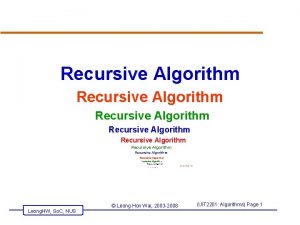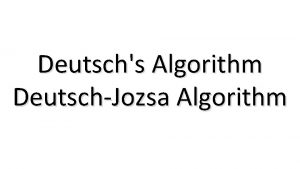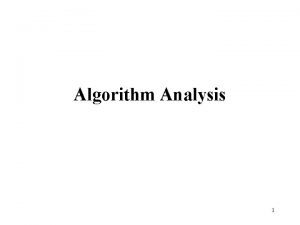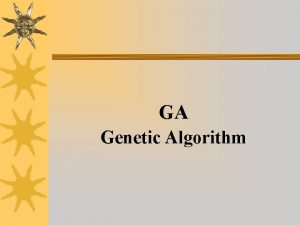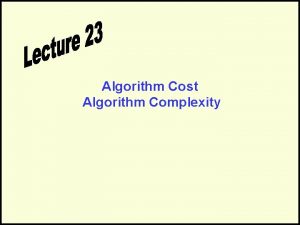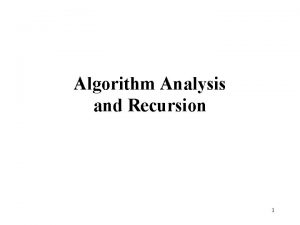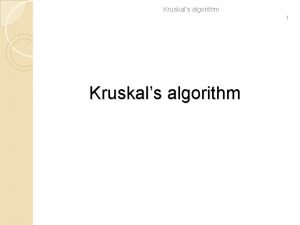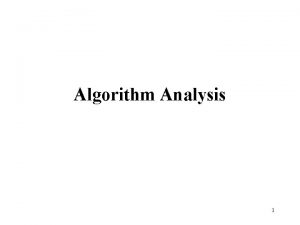FiducciaMattheyses FM algorithm Modified version of KL A












![FM partitioning -1 0 2 0 0 - -2 -1 1 1 [Pan] -1 FM partitioning -1 0 2 0 0 - -2 -1 1 1 [Pan] -1](https://slidetodoc.com/presentation_image_h/ef868ac02a754f67afd4a6de88c0ec42/image-13.jpg)
![FM partitioning -1 -2 -2 0 0 - -2 -1 1 1 [Pan] -1 FM partitioning -1 -2 -2 0 0 - -2 -1 1 1 [Pan] -1](https://slidetodoc.com/presentation_image_h/ef868ac02a754f67afd4a6de88c0ec42/image-14.jpg)
![FM partitioning -1 -2 -2 0 0 - -2 -1 1 [Pan] 1 -1 FM partitioning -1 -2 -2 0 0 - -2 -1 1 [Pan] 1 -1](https://slidetodoc.com/presentation_image_h/ef868ac02a754f67afd4a6de88c0ec42/image-15.jpg)
![FM partitioning -1 -2 -2 0 -1 [Pan] 0 1 - -2 1 -1 FM partitioning -1 -2 -2 0 -1 [Pan] 0 1 - -2 1 -1](https://slidetodoc.com/presentation_image_h/ef868ac02a754f67afd4a6de88c0ec42/image-16.jpg)
![FM partitioning -1 -2 -2 0 1 [Pan] -2 -1 -1 - -2 -1 FM partitioning -1 -2 -2 0 1 [Pan] -2 -1 -1 - -2 -1](https://slidetodoc.com/presentation_image_h/ef868ac02a754f67afd4a6de88c0ec42/image-17.jpg)
![FM partitioning -1 -2 -2 0 1 [Pan] - 0 -2 -1 -1 -2 FM partitioning -1 -2 -2 0 1 [Pan] - 0 -2 -1 -1 -2](https://slidetodoc.com/presentation_image_h/ef868ac02a754f67afd4a6de88c0ec42/image-18.jpg)
![FM partitioning -1 -2 -2 -2 0 0 1 [Pan] -2 -1 -1 -2 FM partitioning -1 -2 -2 -2 0 0 1 [Pan] -2 -1 -1 -2](https://slidetodoc.com/presentation_image_h/ef868ac02a754f67afd4a6de88c0ec42/image-19.jpg)
![FM partitioning -1 -2 -2 0 -2 1 [Pan] -2 -1 -1 -2 -1 FM partitioning -1 -2 -2 0 -2 1 [Pan] -2 -1 -1 -2 -1](https://slidetodoc.com/presentation_image_h/ef868ac02a754f67afd4a6de88c0ec42/image-20.jpg)
![FM partitioning -1 -2 -2 0 -2 -2 1 -1 [Pan] -1 -2 -1 FM partitioning -1 -2 -2 0 -2 -2 1 -1 [Pan] -1 -2 -1](https://slidetodoc.com/presentation_image_h/ef868ac02a754f67afd4a6de88c0ec42/image-21.jpg)
![FM partitioning -1 -2 -2 0 -2 -2 1 -1 [Pan] -1 -2 -1 FM partitioning -1 -2 -2 0 -2 -2 1 -1 [Pan] -1 -2 -1](https://slidetodoc.com/presentation_image_h/ef868ac02a754f67afd4a6de88c0ec42/image-22.jpg)
![FM partitioning -1 -2 -2 0 -2 -1 -3 [Pan] -2 -1 23 FM partitioning -1 -2 -2 0 -2 -1 -3 [Pan] -2 -1 23](https://slidetodoc.com/presentation_image_h/ef868ac02a754f67afd4a6de88c0ec42/image-23.jpg)
![FM partitioning -1 -2 -2 0 -1 -2 -2 -3 [Pan] -1 -2 -1 FM partitioning -1 -2 -2 0 -1 -2 -2 -3 [Pan] -1 -2 -1](https://slidetodoc.com/presentation_image_h/ef868ac02a754f67afd4a6de88c0ec42/image-24.jpg)
![FM partitioning -1 -2 -2 0 -1 -2 -2 -3 [Pan] -1 -2 -1 FM partitioning -1 -2 -2 0 -1 -2 -2 -3 [Pan] -1 -2 -1](https://slidetodoc.com/presentation_image_h/ef868ac02a754f67afd4a6de88c0ec42/image-25.jpg)
![FM partitioning -1 -2 -2 -3 [Pan] -1 -2 -1 26 FM partitioning -1 -2 -2 -3 [Pan] -1 -2 -1 26](https://slidetodoc.com/presentation_image_h/ef868ac02a754f67afd4a6de88c0ec42/image-26.jpg)








![Simulated annealing: More insight. . . Annealing steps [Bazargan] 35 Simulated annealing: More insight. . . Annealing steps [Bazargan] 35](https://slidetodoc.com/presentation_image_h/ef868ac02a754f67afd4a6de88c0ec42/image-35.jpg)


![Simulated annealing: More insight. . . [Bazargan] 38 Simulated annealing: More insight. . . [Bazargan] 38](https://slidetodoc.com/presentation_image_h/ef868ac02a754f67afd4a6de88c0ec42/image-38.jpg)





![Multi-level partitioning G. Karypis, R. Aggarwal, V. Kumar and S. Shekhar, DAC 1997. [Pan] Multi-level partitioning G. Karypis, R. Aggarwal, V. Kumar and S. Shekhar, DAC 1997. [Pan]](https://slidetodoc.com/presentation_image_h/ef868ac02a754f67afd4a6de88c0ec42/image-44.jpg)




- Slides: 48


Fiduccia-Mattheyses (FM) algorithm • Modified version of KL • A single vertex is moved across the cut in a single move – Unbalanced partitions • Vertices are weighted • Concept of cutsize extended to hypergraphs • Special data structure to improve time complexity to O(n 2) per pass – (Main feature) • Can be extended to multi-way partitioning C. M. Fiduccia and R. M. Mattheyses, 19 th DAC, 1982. [Bazargan] 2

The FM algorithm: Data structure Ist Partition +pmax va 1 va 2 -pmax Vertex 1 2 . . n 2 nd Partition +pmax vb 1 List of free vertices vb 2 -pmax Vertex 1 2 . . [Sherwani] n 3

The FM algorithm: Data structure • pmax – Maximum gain – pmax = dmax. wmax, where dmax = max degree of a vertex (# edges incident to it) wmax is the maximum edge weight • -pmax. . pmax array – Index i is a pointer to the list of unlocked vertices with gain i. • Limit on size of partition – A maximum defined for the sum of vertex weights in a partition (alternatively, the maximum ratio of partition sizes might be defined) [Bazargan] 4

The FM algorithm • Initialize – Start with a balanced partition A, B of G (can be done by sorting vertex weights in decreasing order, placing them in A and B alternately) • Iterations – Similar to KL – A vertex cannot move if violates the balance condition – Choosing the node to move: pick the max gain in the partitions – Moves are tentative (similar to KL) – When no moves possible or no more unlocked vertices available, the pass ends – When no move can be made in a pass, the algorithm terminates [Bazargan] 5

Why hyperedges? – For multi terminal nets, K-L may decompose them into many 2 terminal nets, but not efficient! – Consider this example: – If A = {1, 2, 3} B = {4, 5, 6}, graph model shows the cutsize = 4 but in the real circuit, only 3 wires cut – Reducing the number of nets cut is more realistic than reducing the number of edges cut 3 1 q m 2 k p q 4 5 3 m 1 m m 6 [Sait and Yousef] 4 q q 2 k p 5 6 6

Hyperedge to edge conversion • A hyperedge can be converted to a clique 3 1 4 w 3 4 w w 2 “Real” cut=1 • w=? 2 “net” cut=2 w – w = 2/(n-1) has been used, also w=2/n – w = 4/(n 2 – mod(n, 2)) for n=3, w=4/(9 -1)=0. 5 • Always necessary to convert hyper-edge to edge? [Keutzer, via Bazargan] 7

FM gain calculation: Direct hyperedge calc • FM is able to calculate gain directly using hyperedges ( not necessary to convert hyperedges to edges) • Definition: – Given a partition (A|B), we define the terminal distribution of n as an ordered pair of integers (A(n), B(n)), which represents the number of cells net n has in blocks A and B respectively (how fast can be computed? ) – Net is critical if there exists a cell on it such that if it were moved it would change the net’s cut state (whether it is cut or not). – Net is critical if A(n)=0, 1 or B(n)=0, 1 [Keutzer, via Bazargan] 8

FM gain calculation (continued) • Gain of cell depends only on its critical nets – If a net is not critical, its cutstate cannot be affected by the move – A net which is not critical either before or after a move cannot influence the gains of its cells • Let F be the “from” partition of cell i and T the “to” • g(i) = FS(i) - TE(i), where: – FS(i) = # of nets which have cell i as their only F cell – TE(i) = # of nets connected to i and have an empty T side [Keutzer, via Bazargan] 9

Hyperedge gain calculation example • If node “a” moves to the other partition… h 1 h 2 a e h 4 f g b c h 3 d i j l k m n [Bazargan] 10

Subgraph replication to reduce cutsize • Vertices are replicated to improve cutsize • Good results if limited number of components replicated A A’ B B’ [C. Kring and A. R. Newton, ICCAD, 1991] [Sherwani] 11

FM partitioning Moves are made based on object gain. Object Gain: The amount of change in cut crossings that will occur if an object is moved from its current partition into the other partition -1 - each object is assigned a gain - objects are put into a sorted gain list - the object with the highest gain from the larger of the two sides is selected and moved. - the moved object is "locked" - gains of "touched" objects are recomputed - gain lists are resorted 0 2 0 0 - -2 -1 1 1 [Pan] -1 12
![FM partitioning 1 0 2 0 0 2 1 1 1 Pan 1 FM partitioning -1 0 2 0 0 - -2 -1 1 1 [Pan] -1](https://slidetodoc.com/presentation_image_h/ef868ac02a754f67afd4a6de88c0ec42/image-13.jpg)
FM partitioning -1 0 2 0 0 - -2 -1 1 1 [Pan] -1 13
![FM partitioning 1 2 2 0 0 2 1 1 1 Pan 1 FM partitioning -1 -2 -2 0 0 - -2 -1 1 1 [Pan] -1](https://slidetodoc.com/presentation_image_h/ef868ac02a754f67afd4a6de88c0ec42/image-14.jpg)
FM partitioning -1 -2 -2 0 0 - -2 -1 1 1 [Pan] -1 14
![FM partitioning 1 2 2 0 0 2 1 1 Pan 1 1 FM partitioning -1 -2 -2 0 0 - -2 -1 1 [Pan] 1 -1](https://slidetodoc.com/presentation_image_h/ef868ac02a754f67afd4a6de88c0ec42/image-15.jpg)
FM partitioning -1 -2 -2 0 0 - -2 -1 1 [Pan] 1 -1 15
![FM partitioning 1 2 2 0 1 Pan 0 1 2 1 1 FM partitioning -1 -2 -2 0 -1 [Pan] 0 1 - -2 1 -1](https://slidetodoc.com/presentation_image_h/ef868ac02a754f67afd4a6de88c0ec42/image-16.jpg)
FM partitioning -1 -2 -2 0 -1 [Pan] 0 1 - -2 1 -1 16
![FM partitioning 1 2 2 0 1 Pan 2 1 1 2 1 FM partitioning -1 -2 -2 0 1 [Pan] -2 -1 -1 - -2 -1](https://slidetodoc.com/presentation_image_h/ef868ac02a754f67afd4a6de88c0ec42/image-17.jpg)
FM partitioning -1 -2 -2 0 1 [Pan] -2 -1 -1 - -2 -1 17
![FM partitioning 1 2 2 0 1 Pan 0 2 1 1 2 FM partitioning -1 -2 -2 0 1 [Pan] - 0 -2 -1 -1 -2](https://slidetodoc.com/presentation_image_h/ef868ac02a754f67afd4a6de88c0ec42/image-18.jpg)
FM partitioning -1 -2 -2 0 1 [Pan] - 0 -2 -1 -1 -2 -1 18
![FM partitioning 1 2 2 2 0 0 1 Pan 2 1 1 2 FM partitioning -1 -2 -2 -2 0 0 1 [Pan] -2 -1 -1 -2](https://slidetodoc.com/presentation_image_h/ef868ac02a754f67afd4a6de88c0ec42/image-19.jpg)
FM partitioning -1 -2 -2 -2 0 0 1 [Pan] -2 -1 -1 -2 -1 19
![FM partitioning 1 2 2 0 2 1 Pan 2 1 1 2 1 FM partitioning -1 -2 -2 0 -2 1 [Pan] -2 -1 -1 -2 -1](https://slidetodoc.com/presentation_image_h/ef868ac02a754f67afd4a6de88c0ec42/image-20.jpg)
FM partitioning -1 -2 -2 0 -2 1 [Pan] -2 -1 -1 -2 -1 20
![FM partitioning 1 2 2 0 2 2 1 1 Pan 1 2 1 FM partitioning -1 -2 -2 0 -2 -2 1 -1 [Pan] -1 -2 -1](https://slidetodoc.com/presentation_image_h/ef868ac02a754f67afd4a6de88c0ec42/image-21.jpg)
FM partitioning -1 -2 -2 0 -2 -2 1 -1 [Pan] -1 -2 -1 21
![FM partitioning 1 2 2 0 2 2 1 1 Pan 1 2 1 FM partitioning -1 -2 -2 0 -2 -2 1 -1 [Pan] -1 -2 -1](https://slidetodoc.com/presentation_image_h/ef868ac02a754f67afd4a6de88c0ec42/image-22.jpg)
FM partitioning -1 -2 -2 0 -2 -2 1 -1 [Pan] -1 -2 -1 22
![FM partitioning 1 2 2 0 2 1 3 Pan 2 1 23 FM partitioning -1 -2 -2 0 -2 -1 -3 [Pan] -2 -1 23](https://slidetodoc.com/presentation_image_h/ef868ac02a754f67afd4a6de88c0ec42/image-23.jpg)
FM partitioning -1 -2 -2 0 -2 -1 -3 [Pan] -2 -1 23
![FM partitioning 1 2 2 0 1 2 2 3 Pan 1 2 1 FM partitioning -1 -2 -2 0 -1 -2 -2 -3 [Pan] -1 -2 -1](https://slidetodoc.com/presentation_image_h/ef868ac02a754f67afd4a6de88c0ec42/image-24.jpg)
FM partitioning -1 -2 -2 0 -1 -2 -2 -3 [Pan] -1 -2 -1 24
![FM partitioning 1 2 2 0 1 2 2 3 Pan 1 2 1 FM partitioning -1 -2 -2 0 -1 -2 -2 -3 [Pan] -1 -2 -1](https://slidetodoc.com/presentation_image_h/ef868ac02a754f67afd4a6de88c0ec42/image-25.jpg)
FM partitioning -1 -2 -2 0 -1 -2 -2 -3 [Pan] -1 -2 -1 25
![FM partitioning 1 2 2 3 Pan 1 2 1 26 FM partitioning -1 -2 -2 -3 [Pan] -1 -2 -1 26](https://slidetodoc.com/presentation_image_h/ef868ac02a754f67afd4a6de88c0ec42/image-26.jpg)
FM partitioning -1 -2 -2 -3 [Pan] -1 -2 -1 26

Time complexity of FM • For each pass, – Constant time to find the best vertex to move. – After each move, time to update gain buckets is proportional to degree of vertex moved. – Total time is O(p), where p is total number of pins • Number of passes is usually small. [Pan] 27

Extensions

Tie-breaking strategy • For each vertex, instead of having a gain bucket, a gain vector is used. • Gain vector is a sequence of potential gain values corresponding to numbers of possible moves into the future. • Therefore, rth entry looks r moves ahead. • Time complexity is O(pr), where r is max # of look-ahead moves stored in gain vector. • If ties still occur, some researchers observe that LIFO order improves solution quality. “An Improved Min-Cut Algorithm for Partitioning VLSI Networks”, IEEE Trans. Computers, 33(5): 438 -446, 1984. [Pan] 29

Ratio cut objective • It is not desirable to have some pre-defined ratio on the partition sizes. • Wei and Cheng proposed the Ratio Cut objective. • Try to locate natural clusters in circuit and force the partitions to be of similar sizes at the same time. • Ratio Cut RXY = CXY/(|X| x |Y|) • A heuristic based on FM was proposed. “Towards Efficient Hierarchical Designs by Ratio Cut Partitioning”, ICCAD, pages 1: 298 -301, 1989. [Pan] 30

Multi-way partitioning • Dividing into more than 2 partitions. • Algorithm by extending the idea of FM + Krishnamurthy. L. Sanchis, “Multiple-way Network Partitioning, IEEE Trans. Computers, 38(1): 62 -81, 1989. [Pan] 31

Simulated annealing

Simulated annealing • Idea originated from observations of crystal formations (e. g. , in lava) – A crystal is in a low energy state – Materials tend to form crystals (global minimum) – If at the right temperature (i. e. , right speed), a molecule will adhere to a crystal formation • Very slowly decrease temperature – When very hot, molecules move freely • When a molecule gets to a chunk of crystal, it *might* move away due to its high speed – When colder, molecules slow down • The probability of moving away from a local optimum decreases – When the material “freezes”, all molecules are fixed and the material is in minimum energy state [Bazargan] 33

Simulated annealing algorithm • Components: – Solution space (e. g. , slicing floorplans) – Cost function (e. g. , the area of a floorplan) • Determines how “good” a particular solution is – Perturbation rules (e. g. , transforming a floorplan to a new one) – Simulated annealing engine • • A variable T, analogous to temperature An initial temperature T 0 (e. g. , T 0 = 40, 000) A freezing temperature Tfreez (e. g. , Tfreez=0. 1) A cooling schedule (e. g. , T = 0. 95 * T) [Bazargan] 34
![Simulated annealing More insight Annealing steps Bazargan 35 Simulated annealing: More insight. . . Annealing steps [Bazargan] 35](https://slidetodoc.com/presentation_image_h/ef868ac02a754f67afd4a6de88c0ec42/image-35.jpg)
Simulated annealing: More insight. . . Annealing steps [Bazargan] 35

Simulated annealing algorithm Procedure Simulated. Annealing cur. Solution = random initial solution T = T 0 // initial temperature while (T > Tfreez) do for i=1 to NUM_MOVES_PER_TEMP_STEP do next. Sol = perturb (cur. Solution) Dcost = cost(next. Sol) – cost(cur. Solution) if accept. Move (Dcost, T) then cur. Solution = next. Sol // accept the move T = cool. Down (T ) Procedure accept. Move (Dcost, T) if Dcost < 0 then return TRUE // always accept a good move else boltz = e-Dcost / k T // Boltzmann probability function r = random(0, 1) // uniform rand # between 0&1 if r < boltz then return TRUE else return FALSE [Bazargan] 36

Simulated annealing: Move acceptance • Good moves are always accepted • Accepting bad moves: – When T = T 0, bad move acceptance probability 1 – When T = Tfreez, Bad move acceptance probability = 0 • Boltzmann probability function? !? – boltz = e-Dcost / k T – k is the Boltzmann constant, chosen so that all moves at the initial temperature accepted [Bazargan] 37
![Simulated annealing More insight Bazargan 38 Simulated annealing: More insight. . . [Bazargan] 38](https://slidetodoc.com/presentation_image_h/ef868ac02a754f67afd4a6de88c0ec42/image-38.jpg)
Simulated annealing: More insight. . . [Bazargan] 38

The work of Johnson, et al. • An extensive empirical study of Simulated Annealing versus Iterative Improvement Approaches. • Conclusion: SA is a competitive approach, getting better solutions than KL for random graphs. Remarks: – Netlists are not random graphs, but sparse graphs with local structure. – SA is too slow. So KL/FM variants are still most popular. – Multiple runs of KL/FM variants with random initial solutions may be preferable to SA. “Optimization by Simulated Annealing: An Experimental Evaluation Part I, Graph Partitioning”, Operations Research, 37: 865 -892, 1989. [Pan] 39

Some other approaches • KL/FM-SA Hybrid: Use KL/FM variant to find a good initial solution for SA, then improve that solution by SA at low temperature. • Tabu Search • Genetic Algorithm • Spectral Methods (finding Eigenvectors) • Network Flows • Quadratic Programming • . . . [Pan] 40

• https: //web. archive. org/web/20081003192033/http: //www. s tanford. edu/~dgleich/demos/matlab/spectral. html 41

Clustering • Clustering – Bottom-up process – Merge heavily connected components into clusters – Each cluster will be a new “node” – “Hide” internal connections (i. e. , connecting nodes within a cluster) – “Merge” two edges incident to an external vertex, connecting it to two nodes in a cluster • Can be a preprocessing step before partitioning – Each cluster treated as a single node 6 5 3 1 6 2 1 1 4 6 3 4 1, 2 2 3 5 1 6 3 5 1 [Bazargan] 1 4 4 3 1, 2 2 3, 4 42

Multilevel hypergraph partitioning
![Multilevel partitioning G Karypis R Aggarwal V Kumar and S Shekhar DAC 1997 Pan Multi-level partitioning G. Karypis, R. Aggarwal, V. Kumar and S. Shekhar, DAC 1997. [Pan]](https://slidetodoc.com/presentation_image_h/ef868ac02a754f67afd4a6de88c0ec42/image-44.jpg)
Multi-level partitioning G. Karypis, R. Aggarwal, V. Kumar and S. Shekhar, DAC 1997. [Pan] 44

Coarsening phase • Edge Coarsening • Hyper-edge Coarsening (HEC) • Modified Hyperedge Coarsening (MHEC) [Pan] 45

Uncoarsening and refinement phase 1. FM: Based on FM with two simplifications: – – 2. Limit number of passes to 2 Early-Exit FM (FM-EE), stop each pass if k vertex moves do not improve the cut HER (Hyperedge Refinement): – Move a group of vertices between partitions so that an entire hyperedge is removed from the cut [Pan] 46

h. METIS algorithm • Software implementation available for free download from Web: http: //glaros. dtc. umn. edu/gkhome/metis/hmetis/overview • h. METIS-EE 20 – – 20 random initial partitons with 10 runs using HEC for coarsening with 10 runs using MHEC for coarsening FM-EE for refinement • h. METIS-FM 20 – – 20 random initial partitons with 10 runs using HEC for coarsening with 10 runs using MHEC for coarsening FM for refinement [Pan] 47

Experimental results • Compared with five previous algorithms • h. METIS-EE 20 is: – 4. 1% to 21. 4% better – On average 0. 5% better than the best of the 5 algorithms – Roughly 1 to 15 times faster • h. METIS-FM 20 is: – On average 1. 1% better than h. METIS-EE 20 – Improves the best-known bisections for 9 out of 23 test circuits – Twice as slow as h. METIS-EE 20 [Pan] 48
 Multiplier table in mact cases
Multiplier table in mact cases Ao* vs a*
Ao* vs a* Line sweep algorithm
Line sweep algorithm Citect pty ltd
Citect pty ltd Que es sac
Que es sac Alienbrain version control
Alienbrain version control Ukons triage tool version 3
Ukons triage tool version 3 Uft1
Uft1 Version control powerpoint
Version control powerpoint Eview 4
Eview 4 Internal version
Internal version Nhdplus version 2
Nhdplus version 2 00000010
00000010 Define fashion merchandising
Define fashion merchandising Sds2 student version
Sds2 student version Longhorn version
Longhorn version Modern version of romeo and juliet prologue
Modern version of romeo and juliet prologue How to show toolbar in word 2016
How to show toolbar in word 2016 Ali
Ali D365 one version
D365 one version Word 2010 version
Word 2010 version Tortoise svn tutorial
Tortoise svn tutorial Android developer fundamentals (version 2) pdf
Android developer fundamentals (version 2) pdf What is mayella's version of what happened
What is mayella's version of what happened Ccnav
Ccnav Mri version x
Mri version x Cfs version 2
Cfs version 2 Vlan spanning
Vlan spanning Adobe connect version history
Adobe connect version history Excel ch
Excel ch Tommy rea
Tommy rea Iso 9000 version 2000
Iso 9000 version 2000 Https://sigep.cbachilleres.edu.mx/
Https://sigep.cbachilleres.edu.mx/ Management review iso 9001 version 2015 muster
Management review iso 9001 version 2015 muster Promotion request windchill
Promotion request windchill Ddo template
Ddo template Aws signature version 4
Aws signature version 4 Togaf version history
Togaf version history Trigonometry maze
Trigonometry maze Git powerpoint
Git powerpoint Snow white different versions
Snow white different versions Vtp version
Vtp version Ms project history
Ms project history Download spss 13 full crack
Download spss 13 full crack Norma iso 9000 version 2005
Norma iso 9000 version 2005 Sf36 version 2
Sf36 version 2 Left sacroanterior position
Left sacroanterior position Ibm mro inventory optimization
Ibm mro inventory optimization Ideal health facility
Ideal health facility
